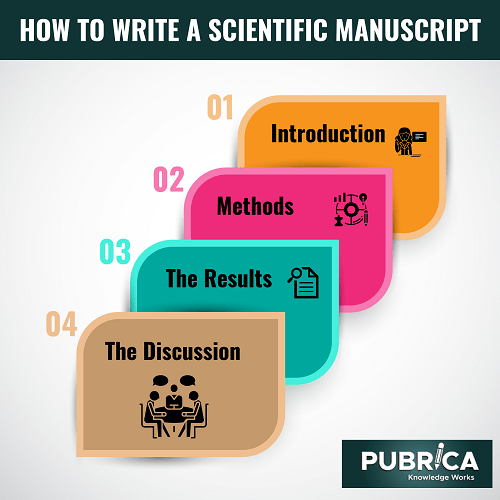
Why should I edit my manuscript before submitting
March 10, 2022
Journal Publication Process for Research Paper
March 18, 2022Writing a scientific manuscript is difficult for even the brightest minds, but it is highly satisfying once the project is completed. Researchers meticulously create manuscripts to share their original ideas and fresh discoveries with the scientific community and the general public. A important amount of time and effort is spent conducting the essential research before it is published into the public realm during the investigative stages. Therefore, the manuscript drafted to present this research must be thorough, logically submitted, and factual. Scientific articles must use a specified language and format to communicate the results to the scientific community while complying with ethical rules.
Scientific manuscript writing follows a logical format that meets specified requirements established by the scientific community. This practice has been standardized in journals that disseminate information to those working in the field. Because the researcher seeks to convey a tale, they must be open and upfront about the particular subject and problem that his research addresses. When the content of the text is laid out early in the article, readers will be motivated to review it. A clear title, abstract, introduction paragraph, methods and materials section, discussion of results, conclusion, and list of references are all included in a well-written paper. Each component of a journal article should be organized in a logical sequence, as scientists have learned to expect.

The IMRD (Introduction, Methods, Results, and Discussion) format, according to experts, arranges study findings into logical sections and communicates ideas and concepts to readers more coherently.
Introduction: The research problem your study should be stated in the introduction, along with its significance in your research domain. A well-written beginning is a crucial component that will entice readers to read the rest of your manuscript writing in research.
Methods: What you did and how you conducted your study should be included in the materials and methods section, as well as the tools, techniques, and instruments you utilized, data collection methods, and information about the lab environment. It’s crucial to have clarity in this part if you want to succeed.
The results: section must provide precise details of your study’s most important findings, as well as if you were able to solve the problem stated in the introduction. Readers will benefit from using tables and figures, which will help simplify complex data and outcomes.
The discussion: part is where you assess the implications and significance of your findings, draw conclusions, and explore the impact of your research in the context of current published literature.
The abstract and title’s primary function is to tell readers about whether or not the findings of your study are relevant to them. As a result, take some time making sure the title is clear and straightforward, as it is usually the first thing a viewer knows. This makes it one of the most crucial tasks in the writing process. Furthermore, your research paper’s title is your first chance to make a favourable impression on reviewers and journal editors, in addition to enticing potential readers. A descriptive title and abstract will also help your work stand out to the reader, who will be more interested if they understand exactly what you’re talking about. The more precise the title, the more likely the text will be discovered and cited.
Around half of the abstracts given at conferences are turned into full publications. This blog is a guide on how to write a scientific manuscript. Authorship criteria should be based on the International Committee of Medical Journal Editors and Manuscripts Submitted to Biomedical Journals: Writing and Editing for publication. Always read the Guide for Authors of the journal to which you wish to submit your paper before proceeding. Begin by outlining the materials and techniques and the statistical analysis that will be performed (1,000 words or less). This is frequently copied from the research protocol.
The second step is to write a 350-word summary of the results. The most critical portions of the paper are the techniques and results. When feasible, display your results with figures rather than tables. The discussion usually prompts a summary of the most critical findings, followed by an evaluation of why the chosen design or model is acceptable. The commentary should bring the data together and highlight the clinical implications of the findings. The discussion should also acknowledge the study’s limitations. Instead of being overly dramatic, the ultimate results should be understated. The final phase is writing the introduction (350 words), abstract, and title page. Failure to state a hypothesis, not addressing the hypothesis, internal contradictions, superficial or rambling discussion, inconsistent use of words, and a conclusion not supported by the evidence are all examples of generic errors. Finally, scientific paper writing does not have to be challenging or painful. Writing scientific manuscripts can be learned quickly with a little organization, discipline, and perseverance, resulting in a fantastic exchange of experience, personal accomplishment, and scientific progress.
About Pubrica
Pubrica provides end-to-end medical research writing, scientific manuscript writing, and editing services, as well as support in writing any medical strand subject. Students pursued medicine, health sciences, physicians, publishers, doctors, professors, clinical researchers, and medical communication providers.
